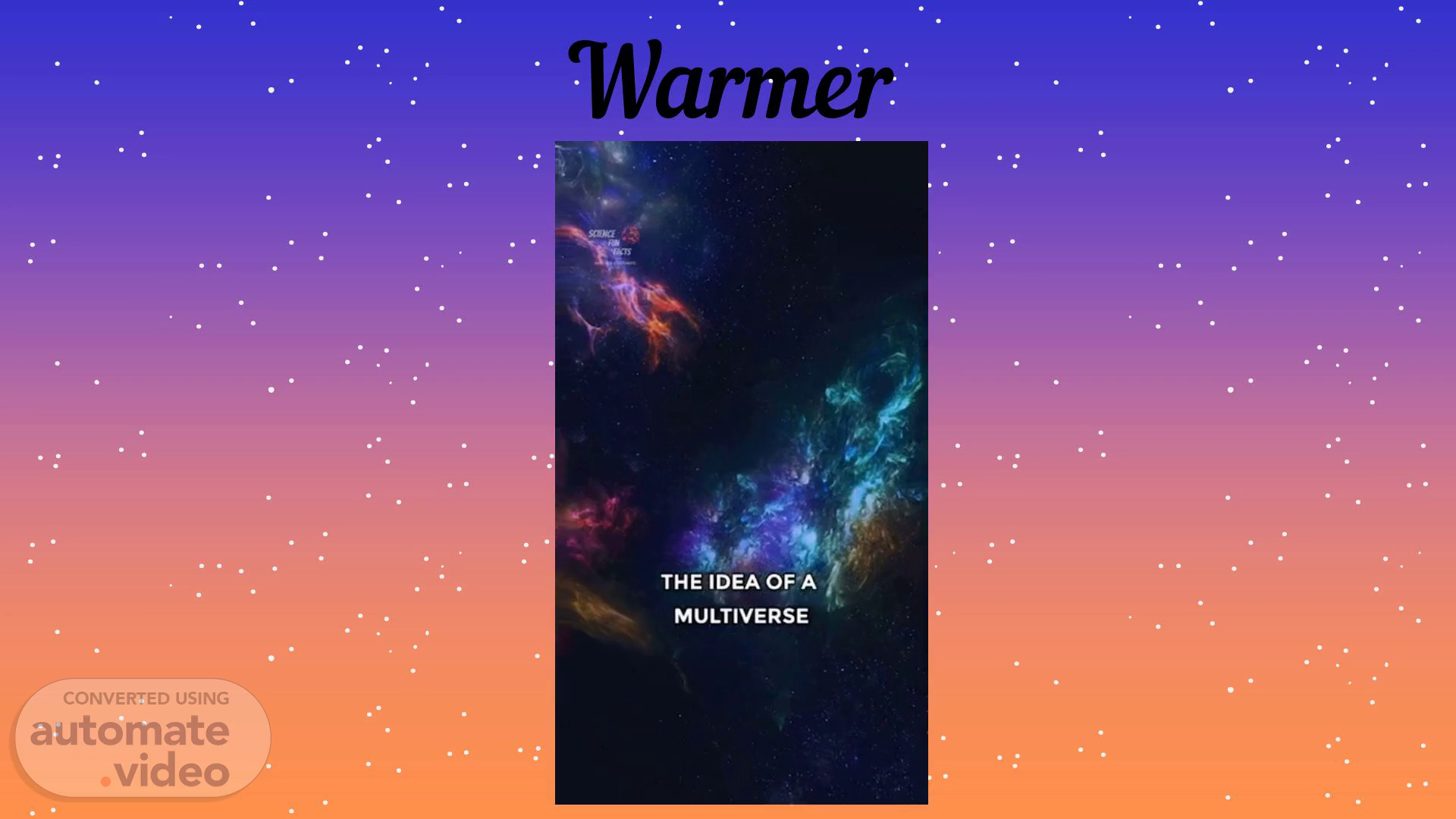Page 1 (0s)
Warmer.
Page 2 (56s)
The Adventure. by Jayant Narlikar. Presented by Group-1.
Page 3 (1m 4s)
About the Author. Jayant Vishnu Narlikar is an Indian astrophysicist and cosmologist born on July 19, 1938. He has made significant contributions to the fields of cosmology, astrophysics, and astronomy. Narlikar is known for his work on the steady-state theory of the universe, which he developed with Sir Fred Hoyle and Hermann Bondi. Narlikar has also worked on various other aspects of astrophysics, including quasars, cosmic microwave background radiation, and the formation of galaxies. Apart from his research, he has been actively involved in science education and popularization. Jayant Narlikar has received numerous awards for his contributions to science, and he has held several prestigious positions, including the directorship of the Inter-University Centre for Astronomy and Astrophysics (IUCAA) in Pune, India..
Page 4 (1m 38s)
What is the Multiverse Theory?. The multiverse theory suggests that there are many universes, not just our own. Each universe may have its own set of rules and conditions. This idea comes from trying to explain certain features of our universe, but it's still a speculative concept without concrete evidence..
Page 5 (1m 55s)
The chapter ‘The Adventure’ is a story about Professor Gangadharpant Gaitonde who is strangely in a different world. He knows it is Pune but the facts are different from what he believes. He decided to go to Bombay via train ‘Jijamata Express’. When he reached Bombay, things were different. When he decides to investigate the history, he finds some surprising facts. The East India Company was still ruling and the Battle of Panipat had been won by Marathas. It was different from what he knew and had studied. The East India Company was taken aback after events of 1857 and the Battle of Panipat had been won by Mughals..
Page 6 (2m 24s)
The Jijamata Express swiftly traveled the Pune-Bombay route, outpacing the Deccan Queen. Passing Lonavala in 40 minutes, the familiar ghat section followed. Brief stops at Karjat and Kalyan were mere blips as Professor Gaitonde's mind raced in Bombay. As a historian, he planned to visit a large library, browsing history books to understand the current state of affairs. He also intended to return to Pune for a discussion with Rajendra Deshpande. The train halted at Sarhad, a small station, where an Anglo-Indian uniformed personnel checked permits..
Page 7 (2m 50s)
Khan Sahib inquired if Gangadharpant was visiting Bombay for the first time, to which he affirmed. Curious about Khan Sahib's journey to Peshawar, Gangadharpant learned about the Frontier Mail route. The conversation offered insights into Indian life. The train, marked as GBMR (Greater Bombay Metropolitan Railway), indicated British presence. Upon reaching Victoria Terminus, Gangadharpant was surprised to see the thriving East India Company. Shocked by this historical deviation, he resolved to investigate further. Walking along Hornby Road, he noticed an English high street with familiar British establishments. Seeking his son at Forbes building, Gangadharpant faced disappointment as the receptionist couldn't find any record of Vinay Gaitonde. Undeterred, he prioritized a visit to the Asiatic Society's library to unravel the historical mystery after a quick lunch..
Page 8 (3m 25s)
An Alternate History.
Page 9 (8m 25s)
After finding a guest house and having a simple meal, Professor Gaitonde took a stroll to Azad Maidan, where he noticed a gathering heading towards a pandal for a lecture. Drawn by habit, he approached the platform, only to find the presidential chair unoccupied. Intrigued, he moved towards it, causing a stir among the audience. Despite objections, he insisted on the importance of a presiding dignitary in a public lecture. The audience, disinterested in old customs, vehemently opposed him. Unfazed, Gangadharpant, experienced in facing hostile crowds, continued speaking. He became a target for objects thrown by the audience but persisted until they physically ejected him from the stage, and he disappeared into the crowd..
Page 10 (8m 56s)
Professor Gaitonde shared with Rajendra the mysterious episode of being found in Azad Maidan after contemplating the catastrophe theory. Rajendra, initially astonished, inquired about Gaitonde's thoughts before the truck incident. Gaitonde revealed he was pondering the catastrophe theory's historical implications and presented a torn page as evidence. The text described a crucial moment in history involving Vishwasrao narrowly avoiding a bullet. Rajendra, after reading, acknowledged the gravity of the situation. Gaitonde pointed out that the page was accidentally taken from the library and lost in the Azad Maidan turmoil, but its contents were crucial. Comparing it with his copy of Bhausahebanchi Bakhar, he highlighted the alignment of the torn page with historical events. Impressed, Rajendra admitted that Gaitonde's experience, initially dismissed as fantasy, now seemed rooted in factual evidence, emphasizing that facts can be stranger than fantasies. Gaitonde eagerly pressed for more information, keen to unravel the mystery..
Page 11 (9m 35s)
Rajendra tried to rationalize Professor Gaitonde's experience using scientific theories. He connected it to the catastrophe theory, explaining how critical moments in history, like Vishwasrao's death at the Battle of Panipat, could alter the course of events. Gaitonde presented a torn page from a book as evidence, describing the turning point in the battle. Rajendra then introduced the concept of many-worlds theory in quantum physics, suggesting that Gaitonde might have transitioned between different worlds during the collision. He proposed that catastrophic situations create alternative realities, and observers can experience only one at a time. Gaitonde questioned why he made the transition, and Rajendra speculated it could be linked to his thoughts about the catastrophe theory and the Battle of Panipat. As the conversation unfolded, Gaitonde pondered the purpose of his transition, but Rajendra admitted that certain questions in science remain unsolved. Despite the mystery, Gaitonde found a silver lining in sharing his real-life experience instead of speculating during his thousandth presidential address..
Page 12 (10m 18s)
Thank You.
